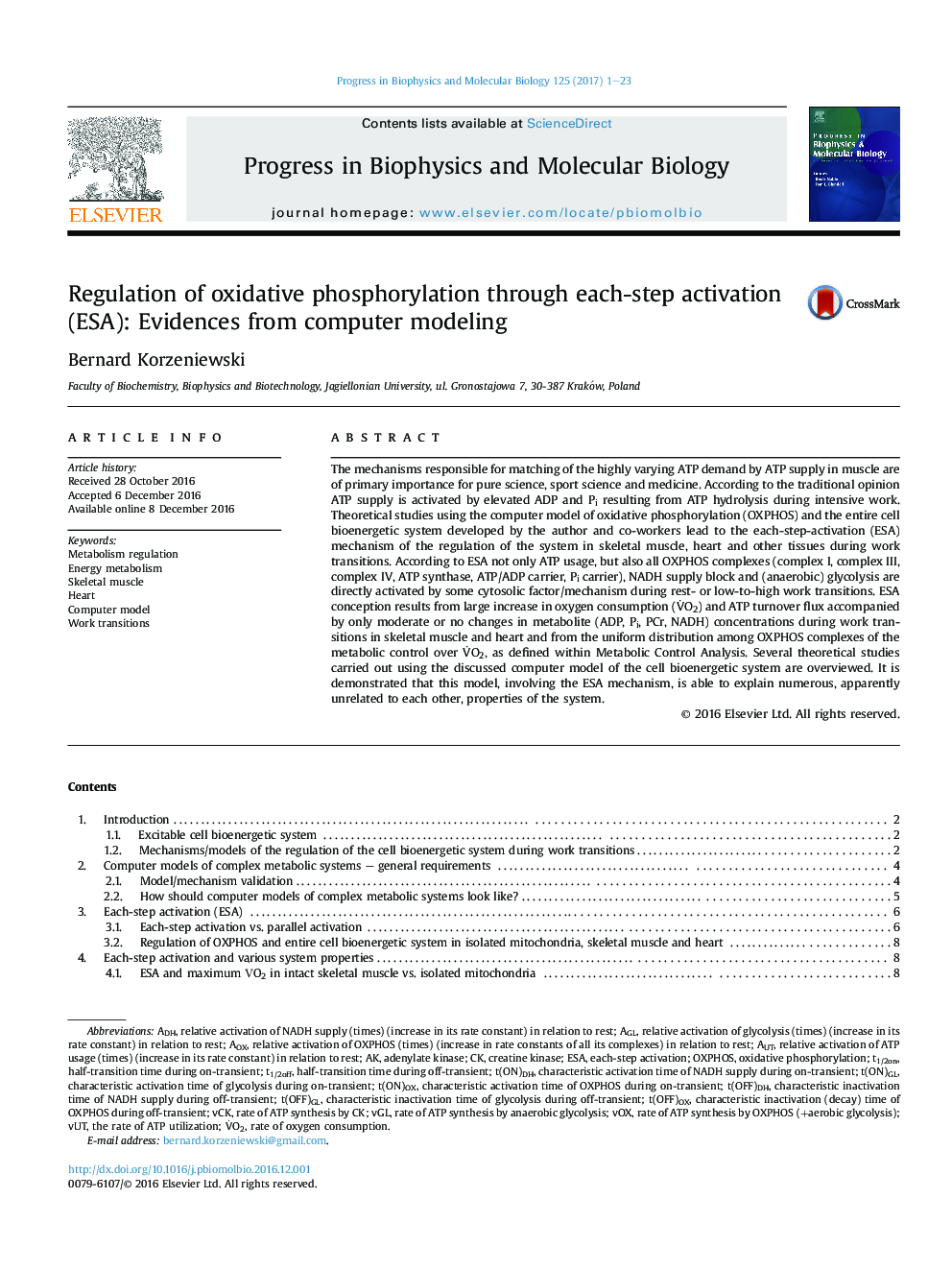| Article ID | Journal | Published Year | Pages | File Type |
|---|---|---|---|---|
| 5519855 | Progress in Biophysics and Molecular Biology | 2017 | 23 Pages |
The mechanisms responsible for matching of the highly varying ATP demand by ATP supply in muscle are of primary importance for pure science, sport science and medicine. According to the traditional opinion ATP supply is activated by elevated ADP and Pi resulting from ATP hydrolysis during intensive work. Theoretical studies using the computer model of oxidative phosphorylation (OXPHOS) and the entire cell bioenergetic system developed by the author and co-workers lead to the each-step-activation (ESA) mechanism of the regulation of the system in skeletal muscle, heart and other tissues during work transitions. According to ESA not only ATP usage, but also all OXPHOS complexes (complex I, complex III, complex IV, ATP synthase, ATP/ADP carrier, Pi carrier), NADH supply block and (anaerobic) glycolysis are directly activated by some cytosolic factor/mechanism during rest- or low-to-high work transitions. ESA conception results from large increase in oxygen consumption (VËO2) and ATP turnover flux accompanied by only moderate or no changes in metabolite (ADP, Pi, PCr, NADH) concentrations during work transitions in skeletal muscle and heart and from the uniform distribution among OXPHOS complexes of the metabolic control over VËO2, as defined within Metabolic Control Analysis. Several theoretical studies carried out using the discussed computer model of the cell bioenergetic system are overviewed. It is demonstrated that this model, involving the ESA mechanism, is able to explain numerous, apparently unrelated to each other, properties of the system.
